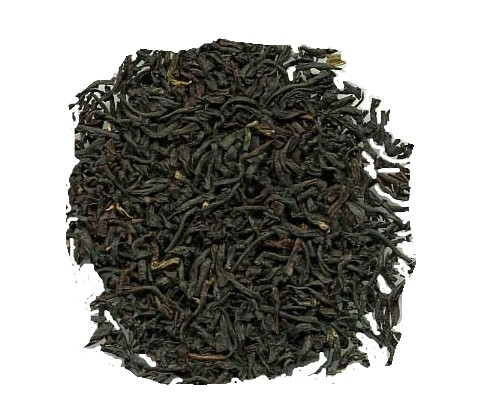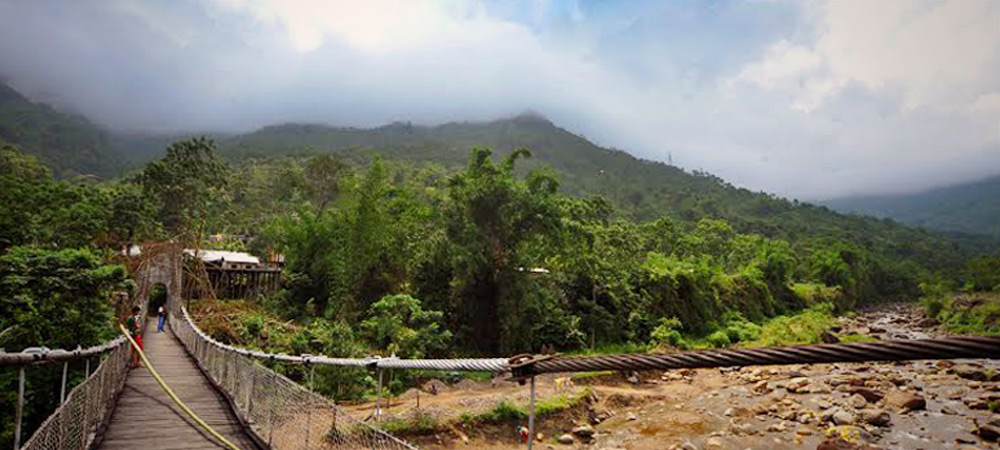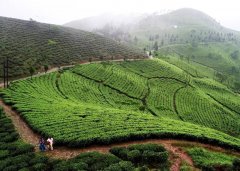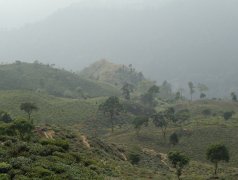Which kind of tea tree tastes good?
In a scientific report, a straight-faced line says that there is a fairly standard timetable for innovation in Japanese tea production: once every 400 years. Tea cultivation is a conservative tradition, with many great names spanning centuries of tea planting culture, preserving topography, methods, skills and standards.
What is clonal tea?
Through clonal tea varieties, forward-looking science and technology embedded in history are combined. This is nothing new; it is this "asexual reproduction" that creates so many varieties of apples and roses. Plants are cultivated from cuttings, usually with single leaves, especially cuttings with specific characteristics. From the perspective of the timetable, more than ten years have passed since the fourth century, and in the past two decades, it has entered the mainstream of tea modernization. It now produces some very interesting high-quality new teas. It may also be the key to tackling climate change.
Clonal tea is worth exploring, especially Darjeeling oolong tea and white tea. For example, you will increasingly see Darjeeling Tea described as an AV2 clone. This means that the names of the Ambari Vegetative; Darjeeling clones come from the plantations that created them. High-quality B157 comes from Bannockburn and P132 from Phoobsering. Elites cultivate elites.)

This is a very long and cautious process of development before clonal seedlings are ready to plant and shrubs begin to produce crops. Identifying a single shrub candidate requires a lot of "eye judgment". It is special and selective to take care of their growth. For example, when making plants take root, they must be oriented in the same direction, preferably west or north. Spring bamboo shoots should be pruned 2-3 cm above the last harvest pruning mark.
A mother shrub can only provide 50-300 healthy branches a year. Biogenetics and reproduction work at the molecular level; you can't just cut it out and replant it. This is a very expensive shift in terms of time, methodology, skills and management. This is directly similar to moving a new electronic product from the research and development stage through prototype design to the production and distribution stage.
Clones and transgenic
Clonal selection, transgenes change the composition of plants. This is a very natural process, with no resemblance to genetically modified organisms, which is a controversial issue throughout the food supply chain. The most socially and environmentally responsible leaders in the tea industry have made it clear that they are opposed to GM crops. If you look at leading retail websites, you will find statements about the use of non-GM projects to verify formal commitment certification.
This may exaggerate the urgency and seriousness of the problem; GM is unlikely to apply to ordinary tea. Compared with soybean or corn, tea is not a major cash crop, and there are many highly localized differences in environment, growth characteristics and uses. Seed producers will not be able to control the spread of their products in the wind in Monsanto's notorious way. Coupled with years of development lead time, growers or any large agribusiness supply company seems to have little incentive.
But for the world's major tea brands, this is not the case when it comes to the ingredients added to basic tea. Additives will certainly move closer to genetically modified organisms. Many low-cost tea bags are made from a corn starch derivative called polylactic acid, which, yes, is usually based on genetically modified genes.
The clonal approach is non-genetically modified and seems more likely to become the mainstream of tea innovation. Kenya is an interesting example. 96% of the tea is exported. These are very low-end goods, but they make up a large part of the country's foreign exchange and employment. Due to falling prices and cost pressures, government-funded R & D institutions have been seeking to improve productivity and quality.

It took 25 years for the Kenya Tea Research Institute to develop and launch a unique clone, TRFK 301 Compact 2, to create a tea that could change its industry. Its price is 3-4 times that of ordinary black tea. The tea is purple, and the pigment from it has been cultivated into leaves containing the antioxidant anthocyanins. This flavonoid is used as a medical supplement and preservative. Purple tea has opened up new opportunities in the instant and ready-to-eat tea markets, pharmacology and food. It does have a drawback; it is unpleasant and cannot be drunk directly.
Darjeeling of clones
Here is an example of a very drinkable clone tea, which shows that this agricultural technology has brought the production of tea to the highest level. The output of moonlight white tea at Castleton Manor in Darjeeling is very small: only 4 kg (9 pounds) in the first harvest season in 2015 and 12 kg in the second harvest season. Moonlight tea is a kind of Yunnan white tea in China. Today, about ten estates in Darjeeling use the name, similar to the Premier Grand Cru on French wine labels.
This kind of tea is made from clonal varieties and its registered name is AV2. All kinds of tea, from black to white, use this method to make tea. The moonlight tea sells for as much as $400 per pound and the first cup costs $2, but the actual price has fallen because the beautiful tea can be soaked many times. It is thought to be just a little more "tilted" and brighter, adding a little fullness without any astringency.

AV2 is one of 30 Darjeeling clones. Different from other tea growing areas, individual tea gardens play a role in entrepreneurship and innovation. Globally, the main focus of the clonal tea industry has been on research institutions, mostly directed by the government, which have created a range of clonal teas that meet the general need to reduce costs, increase yields and improve farming methods. The cultivation of green tea in Japan is driven by 60 years of systematic development, reproduction and diffusion of about 80 cloned varieties, of which Yabukita accounts for more than 90% of the asexual areas. From 1965 to 2000, these areas increased from 50,000 hectares to 50,000 hectares.
This is the scientific aspect of cloning. Despite the high land, labour and administrative costs, they enable Japan to produce really good tea and maintain quality even with a high level of mechanization. In many ways, the Japanese tea industry is now a tradition of cloning. It began in the 1930s; 180 years ago, Commander Perry's black ship opened trade with the United States, driving previous tea innovation. Obviously, the 400-year cycle has been reduced to about a century.)
The elite garden in Darjeeling highlights the technological aspects of the use of science. (of course, both methods are synchronized. The UPASI Institute, established by the South India Tea Association, is very active in supporting innovation and promotion in the Nilgiri region, where Glendale is one of the world's leaders in the transition from tea to cloned tea.) For the production of clones, selectivity is the driving factor, and management and breeding skills are an important basis for transforming new variety inventions into market innovation. Their aim is to accurately locate and enhance or inhibit growth and / or leaf morphological characteristics. They require precise attention to every aspect of introduction and adaptation.
Many of the best Darjeeling producers are producing new white tea varieties, usually using AV2 clones, which look small and subtle, but they generally affect leaf color, texture and tip, nitrogen uptake and pest resistance. They are part of the future of good tea, which really depends on the future of tea. Soil restoration and management is the most urgent. In the 1980s, they were so neglected that many properties went bankrupt. A new generation of managers are putting biodynamic agriculture at the core of restoring and nurturing the terrain.)
Asexual innovation ensures that Darjeeling black tea, as the standard setter of black tea, will become a participant in oolong tea. The soil and brewing methods of the top estates add a unique subtlety to these wines: the famous soft and slightly sweet "musk wine" flavor. The need for success is becoming more and more obvious. Darjeeling Oolong grass grows in the area with high altitude and stable temperature. it is a mixture of Chinese paleozoic shrubs and clonal shrubs. AV2 and complementary varieties are known for their complex and fragrant floral aromas. In the past decade, the new AV2 tea has won most of the prizes in the competition. A recurring theme in the comments is the surprising factor-AV2 tea is not only better, but also significantly different from its very high-quality counterparts: common adjectives are unforgettable, exciting, unexpected, bold, and even "budding".

Is clonal black tea worth trying?
To keep a low profile (not all the comments are enthusiastic), these add up to show that AV2 clone tea is "different". This is what makes tea special: diversity and contrast. When leaf differences are homogenized in the process of growth, harvest, processing and mixing, these differences become human factors in packaging, marketing, distribution and pricing. If you look at a mixture of black breakfast / morning tea / royal tea / afternoon tea, there is nothing to know about leaves: its country or country of origin, harvest type, grade, wilt, rolling, mixed formula, seasoning, additives, etc. It's just "tea".
Finally, the two paths from Bush to your cup of tea-craftsmanship and agricultural mass production-start with whether the leaves are special topography, growing culture, background, and enhanced characteristics, or it is an "ingredient" to make a standardized and reliable product. Clonal tea brings the focus of tea innovation back to the origin: seedlings. In your own exploration of tea, it is worth noting that you mentioned the cloned variety and checked from the descriptions and comments to see if it added something different that might translate into something special for you.
Today, you may not find clonal tea that can produce this special effect. Surprisingly, there is very little discussion about your own topic when choosing the tea you want to try. The main and related reports are online materials-blogs, detailed product descriptions and reviews-single gardens. Almost every elite property manufacturer is targeting clones in its top products. Halmari, Khongea (Assam), Glendale (Nilgiri). Namring, Phuguri, gopaldhhara, Tukvar, Rohini, Castleton, Pootabong, etc. (Darjeeling), gurse (Nepal), varieties Tung Ting, Bai Hao (Taiwan).

This trend is emerging among tea producers. Global industry faces intense competition from cost pressures, overcapacity, productivity, soil and land management and export markets-and these are today's challenges. There are two ways to go: mass market and "high-end"-agribusiness or craftsmen. In general, the craftsman tea tradition follows Japan's innovation schedule and preserves and develops the best practices.
It won't work. The new elite must distinguish between the quality and value of tea, otherwise it will be knocked down by high labour costs (and a growing shortage of skilled workers), decentralized supply chain integration from shrubs to cups, biodynamic agriculture and sustainable land management. Clonal tea is part of the management shift. Take a look, for example, Castleton Moonlight's asexual white, strikingly, this is the old-fashioned tea processing, traditional technology, very high labor costs and low production. This is not a compromise and quality degradation on the path of agribusiness-mechanical mulching, shoddy leaves, additives, bagging and batch mixing-but the old best working with the new best leaf types.
Experts know this. Gopal Upadhayay, who leads the Teabox purchasing team, has written a lot for Still Steeping, and in his brief author profile, he points out that he likes good Darjeeling, "especially cups cloned with AV2." Enough to say. For those of us who have heard little or nothing about cloned tea, they need to conduct their own "testing" and "research"-selfless sampling for public awareness and education. The author reported this morning on a very successful study using Rossini clones Chunhei. Very unique, with an unusual hint of citrus. The study will be carried out again tomorrow.
Important Notice :
前街咖啡 FrontStreet Coffee has moved to new addredd:
FrontStreet Coffee Address: 315,Donghua East Road,GuangZhou
Tel:020 38364473
- Prev

Differences in harvest time and flavor of spring tea, summer tea, autumn tea and winter tea in Darjeeling black tea
The change of seasons is perhaps one of the most beautiful phenomena in nature. The seamless transition from summer to winter is spectacular, as is the quality brought by each season. The blooming of flowers, the falling of leaves, the blowing of warm wind, the falling of snow, each season depicts a different picture for us, in one way, one way, arouses countless emotions. The season of nature design
- Next

Darjeeling Black Tea Manor | which manor is good? Musk Black Tea varieties of Castleton Manor
Musk tea may mean more to the rest of the world than to Darjeeling. The charm of tea lies largely in the belief that its taste is even comparable to that of red wine. For some, this is a turning point, a misinterpretation of the obvious and predictable nature (and taste) of tea. But few people talk about this technology and brewing when they come into contact with musk wine.
Related
- Beginners will see the "Coffee pull flower" guide!
- What is the difference between ice blog purified milk and ordinary milk coffee?
- Why is the Philippines the largest producer of crops in Liberia?
- For coffee extraction, should the fine powder be retained?
- How does extracted espresso fill pressed powder? How much strength does it take to press the powder?
- How to make jasmine cold extract coffee? Is the jasmine + latte good?
- Will this little toy really make the coffee taste better? How does Lily Drip affect coffee extraction?
- Will the action of slapping the filter cup also affect coffee extraction?
- What's the difference between powder-to-water ratio and powder-to-liquid ratio?
- What is the Ethiopian local species? What does it have to do with Heirloom native species?

